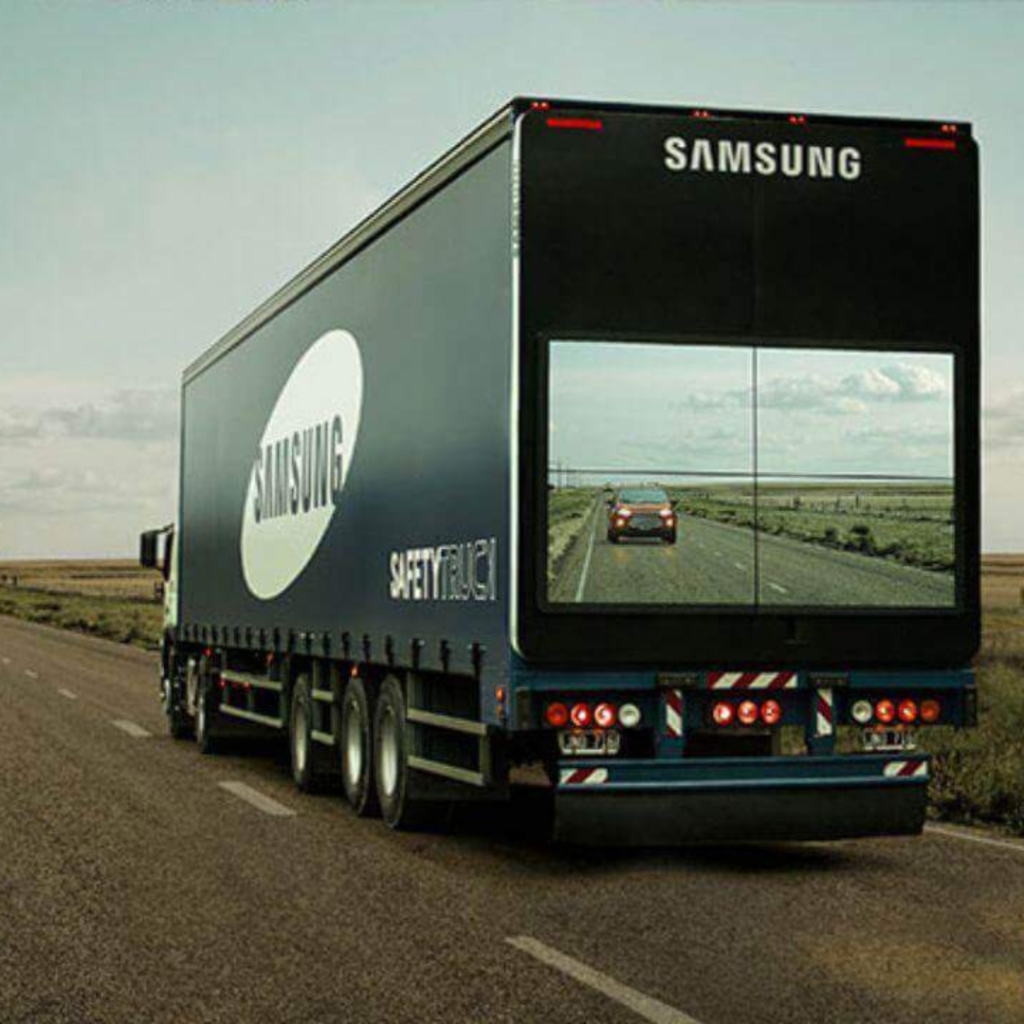Guerrilla marketing is an unconventional and high-impact marketing strategy that relies on creativity, imagination, and low-cost tactics to promote a product, service, or brand.
The term “guerrilla” is borrowed from guerrilla warfare, emphasizing the use of unconventional methods to achieve objectives in a competitive and often crowded marketplace.
Guerrilla marketing campaigns are characterized by their ability to generate buzz, engage the target audience, and create a memorable impact without the need for large financial investments.
What Is Guerrilla Marketing?
Guerrilla marketing is a dynamic and unconventional approach to marketing that relies on creativity, innovation, and a strategic use of resources to achieve maximum impact.
Originating from guerrilla warfare tactics, this marketing style aims to surprise, engage, and leave a lasting impression on the target audience without requiring a substantial financial investment.
History of Guerrilla Marketing?
Guerrilla marketing has a rich and intriguing history that emerged from unconventional tactics and a desire to make a significant impact with limited resources.
The roots of guerrilla marketing can be traced back to the concept of guerrilla warfare, where unconventional strategies were employed by nimble, mobile groups to disrupt larger, more conventional forces.
In the early 1980s, the term “guerrilla marketing” gained widespread recognition with the publication of Jay Conrad Levinson’s book of the same name.
Levinson’s work introduced the idea of utilizing creative and unconventional marketing strategies to achieve maximum results while minimizing costs, particularly beneficial for small businesses.
What Are The Types of Guerrilla Marketing?
Guerrilla marketing encompasses a variety of creative and unconventional strategies designed to capture attention and leave a lasting impact on the target audience. These types of guerrilla marketing strategies leverage innovation, surprise, and strategic thinking to achieve marketing objectives with limited resources.
Here, we explore several key types of guerrilla marketing in detail, providing insights into their characteristics and effectiveness.
1. Ambient Marketing
Ambient marketing involves placing advertising messages in non-traditional spaces and contexts, often blending seamlessly with the environment to surprise and engage the audience.
This type of guerrilla marketing leverages everyday surroundings to convey messages in a unique and unexpected manner. Examples include street art, sidewalk chalk messages, or placing advertisements on objects like park benches or public transportation.
2. Experiential Marketing
Experiential marketing aims to create memorable and immersive experiences for consumers. Brands organize events or activities that allow individuals to interact directly with the product or service.
This type of guerrilla marketing fosters a deeper connection with the audience, relying on the principle that experiences leave a more lasting impression than traditional advertising methods.
3. Viral Marketing
Viral marketing is about creating content that is shareable and has the potential to spread rapidly through word of mouth or online platforms. Guerrilla campaigns under this category often incorporate humor, emotion, or unexpected elements to encourage sharing.
Leveraging social media platforms and user-generated content, viral marketing campaigns aim to reach a wide audience organically and if you are looking for a marketing agency in pune then get social is the right place for you.
4. Street Marketing
Street marketing involves taking the advertising message to the streets, targeting high-traffic areas or public spaces. This type of guerrilla marketing often includes activities like flash mobs, street performances, or interactive installations.
Street marketing is designed to surprise and engage people in their daily lives, fostering a direct and immediate connection between the brand and the audience.
5. Guerilla Projection Marketing
Guerilla projection marketing uses projections on buildings or other surfaces to showcase promotional content in a visually striking way.
This type of guerrilla marketing is particularly effective in urban settings during the evening, providing a unique and attention-grabbing alternative to traditional advertising methods.
6. Stealth Marketing
Stealth marketing, also known as undercover or buzz marketing, involves promoting a product or service subtly without the audience realizing they are being marketed to.
This type of guerrilla marketing often incorporates influencers or individuals who organically incorporate the brand into their daily lives, creating an authentic connection with the audience.
7. Guerilla Advertising
Guerilla advertising involves creating unconventional and eye-catching advertisements in unexpected locations. This could include using unconventional materials, interactive elements, or unexpected placements to disrupt the audience’s usual environment. The goal is to make the advertising message stand out and be memorable.
8. Reverse Graffiti
Reverse graffiti, also known as clean advertising, involves creating images or messages by removing dirt or grime from surfaces.
Marketers use high-pressure water or cleaning agents to “clean” the message onto surfaces like sidewalks or walls. This eco-friendly guerrilla marketing tactic not only surprises but also sparks curiosity.
Guerrilla Marketing Advantages and Disadvantages
Advantages
Cost-Effectiveness
One of the most significant advantages of guerrilla marketing is its cost-effectiveness. Unlike traditional advertising methods that may require substantial budgets, guerrilla tactics often rely on creativity and innovation rather than financial resources. Small businesses and startups with limited budgets can benefit from this approach.
Creativity and Innovation
Guerrilla marketing provides a platform for brands to showcase their creativity and innovation. The unconventional nature of these campaigns allows for unique and memorable ideas that can set a brand apart in a competitive market. Creativity becomes a key asset in capturing audience attention and generating buzz.
Memorability
Guerrilla marketing excels in creating memorable experiences for the audience. The element of surprise, coupled with creative executions, leaves a lasting impression.
This memorability contributes to brand recall and can lead to increased word-of-mouth promotion as individuals share their unique experiences and if you are looking for the best marketing agency in pimple saudagar then get social is the right place for you.
Direct Audience Engagement
Many guerrilla tactics involve direct interaction with the target audience. Whether through street performances, interactive installations, or experiential events, brands can engage with consumers in a personal and immediate way.
This direct engagement fosters a sense of connection and can result in more meaningful interactions.
Viral Potential
Guerrilla marketing campaigns often have the potential to go viral. The shareable and unconventional nature of these campaigns makes them well-suited for social media platforms. When executed successfully, these campaigns can quickly gain traction, reaching a broader audience beyond the initial target.
Flexibility
Guerrilla marketing is highly flexible and adaptable. Brands can experiment with different tactics, quickly adjust their approach based on audience response, and even launch campaigns on short notice. This adaptability allows for real-time adjustments to maximize the effectiveness of the strategy.
Disadvantages
Risk of Backlash
Unconventional tactics carry the risk of backlash, especially if the campaign is perceived as intrusive, offensive, or in poor taste. The subjective nature of individual preferences and sensitivities makes it challenging to predict how audiences will react.
Limited Reach
Guerrilla marketing may have a limited reach compared to traditional advertising methods. The nature of some tactics, such as localized events or street performances, may not effectively target mass audiences. This limitation can impact the overall reach and visibility of the campaign.
Difficulty in Measurement
Measuring the success of guerrilla marketing campaigns can be challenging. Unlike traditional marketing methods with clear metrics, the impact of guerrilla tactics may be subjective and harder to quantify. Brands may struggle to assess the return on investment and determine the effectiveness of the campaign.
Logistical Challenges
Executing guerrilla marketing campaigns often requires meticulous planning and coordination. Logistical challenges, such as obtaining permits for public spaces, securing locations for events, or coordinating large-scale installations, can be significant barriers that add complexity to campaign execution.
Sustainability
Some guerrilla tactics are inherently short-term and may lack sustainability. While these tactics can create immediate buzz, maintaining a long-term impact may require additional strategies. Brands must consider how to transition from short-term excitement to sustained engagement.
Legal and Ethical Concerns
Guerrilla marketing may raise legal and ethical concerns, particularly when it involves unconventional activities in public spaces. Brands must navigate regulations to avoid legal issues and maintain a positive reputation. Trespassing, public disturbance, or perceived nuisance can damage a brand’s image.
Guerilla Marketing Examples
Guerrilla marketing relies on out-of-the-box thinking to create memorable and impactful campaigns that surprise and engage the audience.
Here are some notable examples of guerrilla marketing, showcasing the diverse range of tactics and creativity employed by brands:
Flash Mob by T-Mobile
In a bustling train station in London, T-Mobile organized a flash mob that started with a single person dancing, gradually growing into a lively and choreographed performance.
The unexpected and entertaining event captured the attention of passersby and became a viral sensation, showcasing the power of experiential marketing.
IKEA’s “Everyday Fabulous” Bus Stop
IKEA transformed a bus stop into a cozy living room, complete with furniture and decorations. Commuters waiting for their buses could experience the comfort and style of IKEA’s products firsthand.
This ambient marketing approach not only surprised people but also effectively communicated the brand’s message.
Red Bull’s Stratos Jump
Red Bull took experiential marketing to new heights, quite literally, with the Stratos Jump. Austrian skydiver Felix Baumgartner jumped from the edge of space, breaking the sound barrier during his descent.
This extreme and unprecedented event not only captured global attention but also reinforced Red Bull’s association with adrenaline-fueled activities.
The Dark Knight’s Bat Signal
To promote the release of “The Dark Knight” movie, Warner Bros. projected the Bat Signal onto prominent buildings in various cities.
This clever use of guerrilla projection marketing not only created excitement for the film but also turned the cityscape into a dynamic promotional canvas.
The Walking Dead Zombie Invasion
To promote the TV series “The Walking Dead,” a zombie invasion was staged in various locations. Realistic-looking zombies emerged from subways and other public spaces, startling unsuspecting pedestrians. This guerrilla tactic effectively created buzz around the show and generated social media discussions.
Coca-Cola Happiness Machine
Coca-Cola installed a “Happiness Machine” in a college campus, dispensing not just drinks but also surprising gifts like pizzas and sandwiches.
The joy and surprise on the faces of students were captured on camera and turned into a heartwarming video that went viral. This campaign showcased the brand’s commitment to spreading happiness.
Guerilla Gardening by Greenpeace
Greenpeace engaged in guerilla gardening by planting unauthorized but harmless flowerbeds on concrete city surfaces. This environmental initiative aimed to raise awareness about the need for more green spaces in urban areas, effectively blending activism with guerrilla marketing.
Conclusion
Guerrilla marketing stands as a testament to the boundless creativity and innovation that can be injected into the world of advertising. The showcased examples illustrate the diverse array of tactics employed by brands to break away from traditional norms and capture the attention of their target audiences.
The cost-effectiveness of guerrilla marketing opens doors for both established corporations and emerging businesses to make a memorable impact with limited resources.






Add a Comment